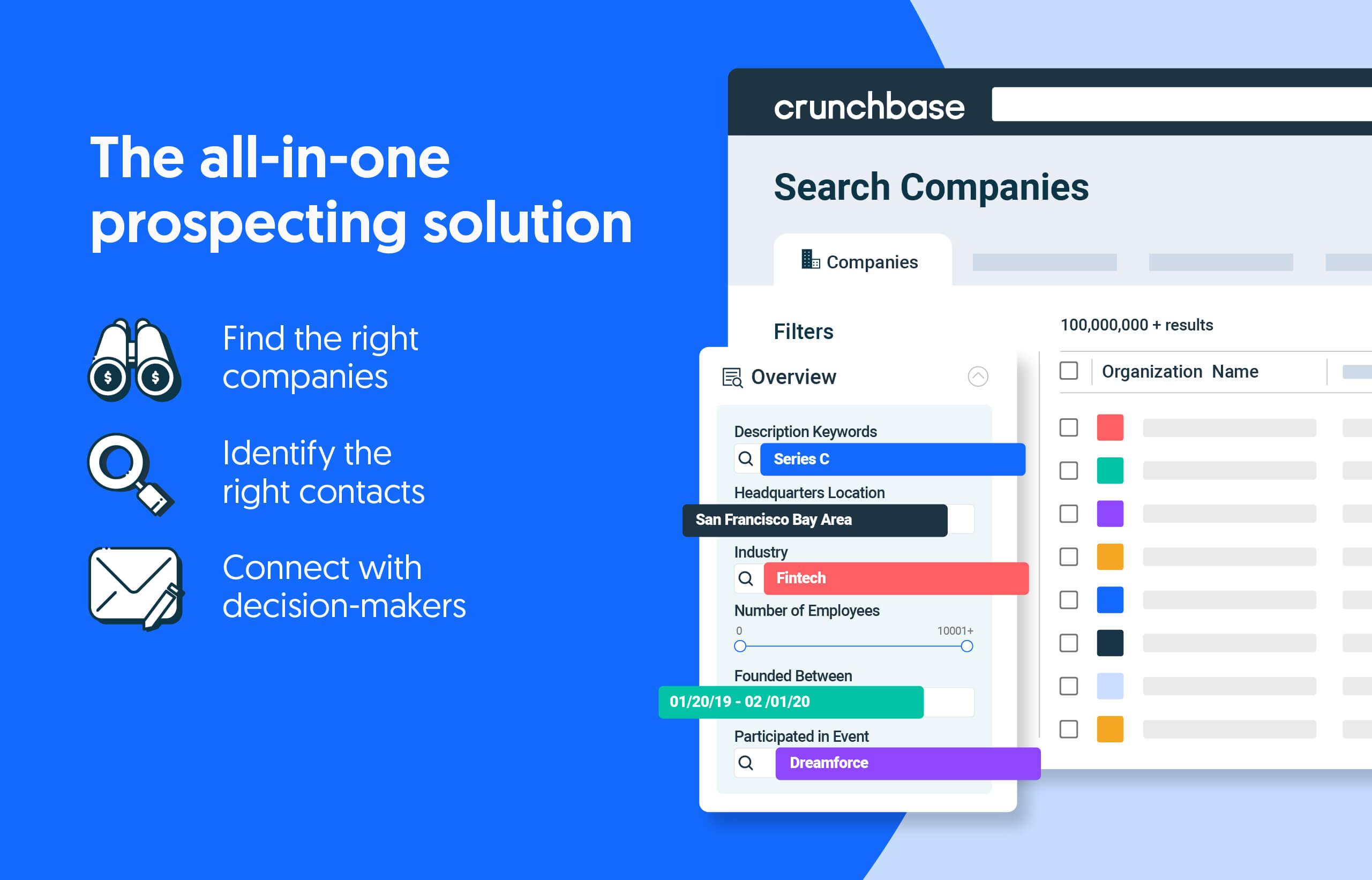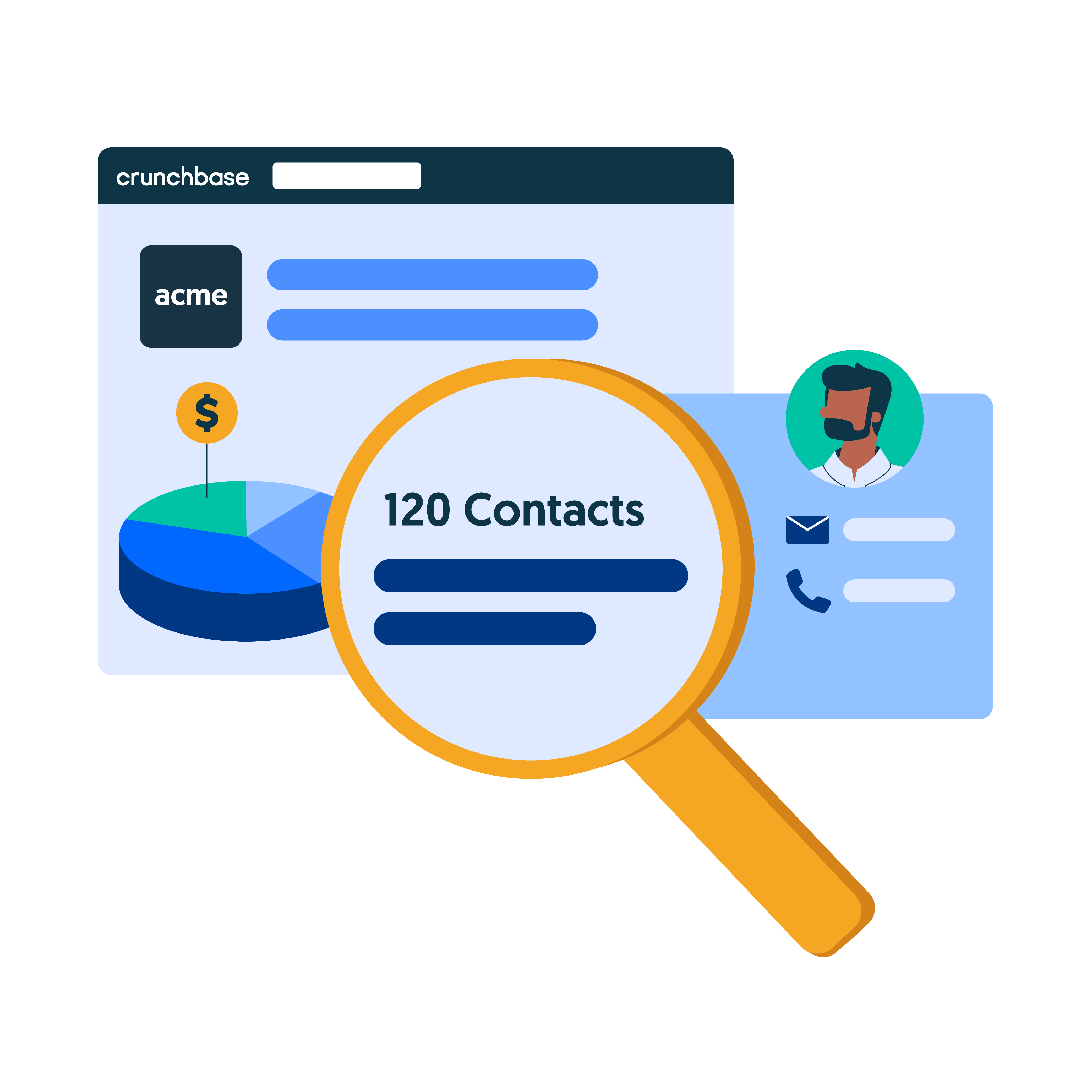This article is part of the Crunchbase Community Contributor Series. The author is an expert in their field and a Crunchbase user. We are honored to feature and promote their contribution on the Crunchbase blog.
Please note that the author is not employed by Crunchbase and the opinions expressed in this article do not necessarily reflect official views or opinions of Crunchbase, Inc.
If you’ve been working in sales for a while, you probably know the ins and outs of sales prospecting. However, you may still be wary of selling online. In recent years, we’ve all had to adapt to the sales digital transformation. While we may be getting back to normal after the pandemic, it looks like virtual sales will continue to prosper.
To meet the new operational needs of a virtual workspace, sales teams have dramatically adapted their sales techniques, and for the better. Sales teams are now able to sell more efficiently and effectively — and to an even wider audience.
The trick to virtual selling is to focus on top purchase decision factors and prioritize the discovery of buyer concerns, wants and needs. It is important to make sure that you show potential prospects how you can solve their problem.
In this article, we will cover virtual strategies that will help optimize your virtual sales approach and set you up for success. Whether you are well-versed in virtual sales or are relatively new to the game, we’ll dive into all the techniques you need to know to master virtual selling.
Master the basics
The graph below shows the factors that are the most important for purchase decisions. When preparing for a sales meeting with a potential prospect, you must consider whether your company is focused on these basics.
The basics include:
- Clarification: Show potential customers what your brand can do for them and their ROI.
- Being prepared: This includes doing your research and understanding your buyer’s values and their pain points. Be organized and have all your materials ready when you make your call.
- Getting ready for questions: Allowing the buyers to ask questions allows you to educate them. Answer these questions by focusing on your product’s value.
- Listening to your prospects: Always pay attention to your prospect’s tone, word choice, and attitude when you are talking with them. Make sure that you understand what they are saying and tap into exactly how your prospect is feeling.
- Not wasting time: Make efficient and effective use of your and the customer’s time. Know how long the phone call will last and stay on topic without being pushy.
Use video
Humans are visual creatures. When you complete in-person sales pitches, you get to show your customers why they can trust you. To make virtual sales techniques effective, you must be able to deliver that very same experience through technology. Cue video.
There are two types of videos you can use for virtual selling: synchronous and asynchronous.
Synchronous
Synchronous forms of video communication happen with your prospect in real-time. A video conference works best if you have software for the job. Commercial phone services, like 8×8’s video calling tool, allow you to interact with customers face-to-face online. It allows you to have high-quality calls that are user-friendly and require no additional downloads for your prospects.
Asynchronous
Asynchronous videos allow you to produce, edit and release highly effective content on all your platforms. You can send these as follow-ups or release them on your website and social media platforms.
Seize the opportunity
Make sure these videos are available at each stage of the sales pipeline without going overboard. Remember, you must make sure you give prospects the opportunity for the sales process to go both ways.
By mastering asynchronous and synchronous video, you can learn how to make them an efficient part of your sales technique. The chart below shows the third most popular type of video content worldwide at the start of 2021 was tutorials. This was followed closely by video live streams. By focusing on both asynchronous and synchronous you are capturing some of the most-watched content on the internet.
Choose your tools wisely
Not all virtual selling tools are created equally. When you’re choosing how you want to interact with your prospects online, do your research. Choose video and calling software that will work for your team.
If you want to launch an omnichannel strategy, consider a tool that allows you to communicate via video, voice and text. One way to do this is by getting a cloud contact center, which will break down communication silos and support personalized, proactive interactions.
Search less. Close more.
Grow your revenue with all-in-one prospecting solutions powered by the leader in private-company data.
Be curious
As previously mentioned, the basics of effective sales techniques involve asking questions. Hire and foster a team that prioritizes curiosity. It’s important to encourage your team and ask them questions, so you can learn more about what their prospects want.
Make it a part of your sales training strategy to get the prospects also talking during their pitch. They should take the information they learn and incorporate it in the conversation so the client feels heard. The curiosity will build trust between you and your clients while allowing you to gather the intel needed to sell to them more effectively.
Richard Conn is the Senior Director for Demand Generation at 8×8, a leading Communications as a Service platform with integrated contact center, voice, video, and chat functionality. Richard is an analytical & results-driven digital marketing leader with a track record of achieving major ROI improvements in fast-paced, competitive B2B environments.







